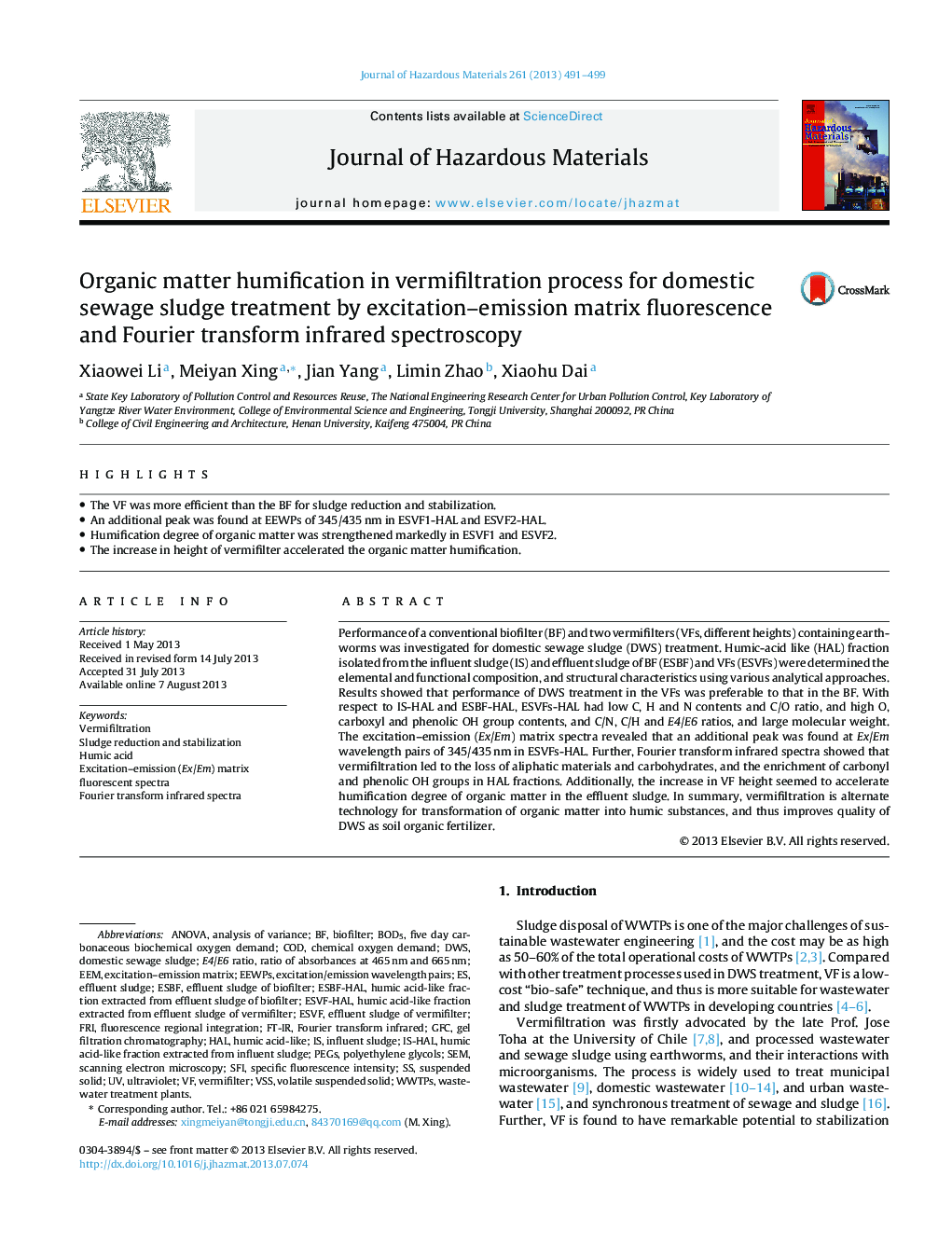| Article ID | Journal | Published Year | Pages | File Type |
|---|---|---|---|---|
| 6972086 | Journal of Hazardous Materials | 2013 | 9 Pages |
Abstract
Performance of a conventional biofilter (BF) and two vermifilters (VFs, different heights) containing earthworms was investigated for domestic sewage sludge (DWS) treatment. Humic-acid like (HAL) fraction isolated from the influent sludge (IS) and effluent sludge of BF (ESBF) and VFs (ESVFs) were determined the elemental and functional composition, and structural characteristics using various analytical approaches. Results showed that performance of DWS treatment in the VFs was preferable to that in the BF. With respect to IS-HAL and ESBF-HAL, ESVFs-HAL had low C, H and N contents and C/O ratio, and high O, carboxyl and phenolic OH group contents, and C/N, C/H and E4/E6 ratios, and large molecular weight. The excitation-emission (Ex/Em) matrix spectra revealed that an additional peak was found at Ex/Em wavelength pairs of 345/435Â nm in ESVFs-HAL. Further, Fourier transform infrared spectra showed that vermifiltration led to the loss of aliphatic materials and carbohydrates, and the enrichment of carbonyl and phenolic OH groups in HAL fractions. Additionally, the increase in VF height seemed to accelerate humification degree of organic matter in the effluent sludge. In summary, vermifiltration is alternate technology for transformation of organic matter into humic substances, and thus improves quality of DWS as soil organic fertilizer.
Keywords
DWSBOD5VermifilterFRIGFCSFIEEMVSsWWTPsfluorescence regional integrationHumic acidUltravioletBiofilterFourier transform infraredanalysis of varianceANOVAchemical oxygen demandSuspended solidFT-IRFourier Transform Infrared Spectravolatile suspended solidexcitation–emission matrixSEMScanning electron microscopyVermifiltrationHalCodgel filtration chromatographyPolyethylene glycolsWastewater treatment plantspegs
Related Topics
Physical Sciences and Engineering
Chemical Engineering
Chemical Health and Safety
Authors
Xiaowei Li, Meiyan Xing, Jian Yang, Limin Zhao, Xiaohu Dai,
